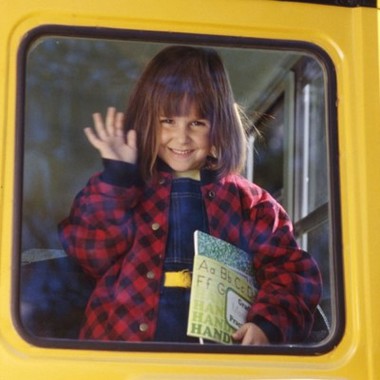 Fun with Letters for Parents and Children
One of the Every Child Ready to Read
Workshops that you can present to a group of parents who are accompanied by
their children is Fun with Letters for
Parents and Children. Here is a brief look at the workshop.
For the workshop you
will be using the following books: alphabet books; musical CD’s with songs
about letter names and sounds; letter puzzles (I recommend those made by
Melissa and Doug); and magnetic or foam letters (Lakeshore Learning has some
nice magnetic letters, both giant magnetic upper and lower case letters.)
In this workshop (as
every other workshop), you will explain the five simple practices: Talking;
Singing, Reading, Writing, and Playing. Then you sing an easy song that will
include the names of the children that are in attendance. Example (Sung to Bingo): There is a child that I know
best, and Rocky is his name oh. R-o-c-k-y, R-o-c-k-y, R-o-c-k-y, And Rocky is
his name oh.
This workshop
emphasizes not only learning the names of the 26 letters, but also learning
which names go with which letter shapes, both
uppercase and lowercase.
Talking
For this
practice, you explain what environmental print is and have children identify
certain letters. You can even play the “I Spy” game and have children find objects
that begin with a certain letter in the room.
Singing
Next, sing
the alphabet song. Remember to sing the letters “L,M,N,O,P” a little slower, so
they think it is not just one letter. Another way to sing the alphabet song
that will less confusing to young children when you get to above letters is to sing
the song to the tune of “Mary Had A Little Lamb.” Try it! While singing the song, display your
magnetic or foam letters at the same time.
Reading
Present
some SIMPLE alphabet books that are not confusing to children who are just
learning their letters. One of the alphabet Golden Books has just been
re-released and it would be a good choice. Either way, choose a book that shows
one letter per page and that depicts one object per page. Golden Book: My ABC Book by Art Seiden. ISBN: 978-0-448-48215-6.
Writing
Encourage
parents to start with uppercase letters first, and then proceed to lowercase
letters. The parent should start by using their child’s first name. Explain
that they can print their child’s name in large letters, and have their child
trace over them. You can also explain how families can make a simple alphabet
book, or if time permits, have the families make an alphabet book during the
workshop. Here are other examples you can share: using chalk to write letters
on a chalkboard or sidewalk; making letters out of cardboard, putting the
letter under a piece of paper, and coloring over the letter with caryons, watching
the letter appear; writing letters in shaving cream; having the child help
handwrite a letter to a friend or relative.
Playing
For Play,
the manual recommends playing the Letter Day Game. Here is how it is suggested
you have the parents play this game with their children.
Tell
your child that today is the letter ____ day. For example, the “mmm” sound. Tell
your child that you both are going to look for things that begin with “mmm.” The
child has to think of or find words that have the same sound on his or her own.
Again, use picture books, things around the house, or things you and your child
can see anywhere. Praise your child’s success. Give him or her a little help if
needed. For example, if your child is having a hard time, you might say “Well, here’s
a bird. Bird starts with the ‘buh’ sound.” “What else can you
think of that starts with the ‘buh’ sound?”
For more information and materials, go to www.michigan.gov/youthlibraryservices in the Every Child Ready to Read section.
--- Sue
|